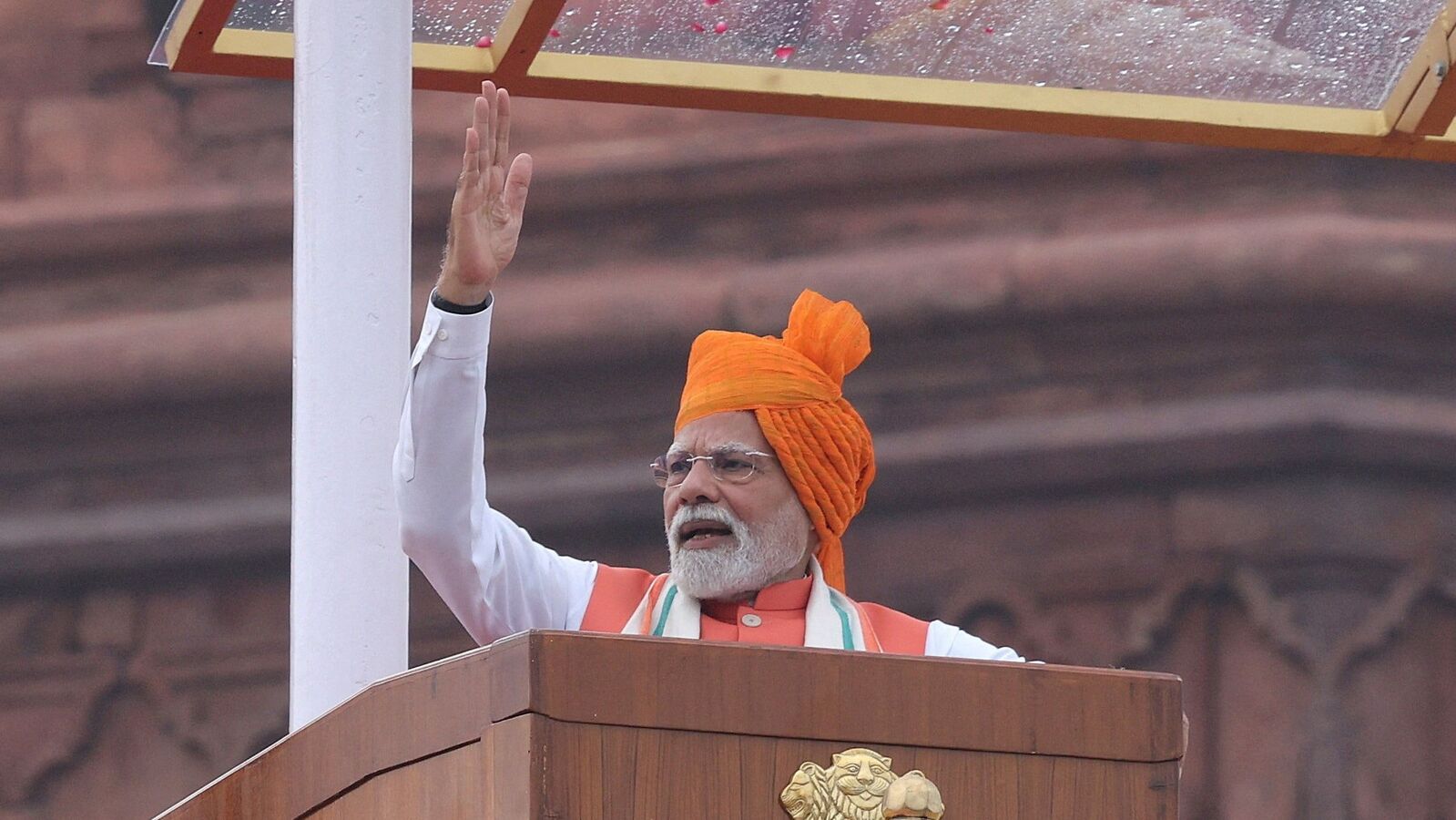Copyright © HT Digital Streams Limited All rights reserved. This Deepavali, let’s celebrate the power of reforms to help India realize its dreams. Prime Minister Modi’s dream for India in its 100th year of independence in 2047 is that of a Viksit Bharat—or developed India. (REUTERS) Summary If GST 1.0 was a ‘One Nation, One Tax’ revolution that eased internal barriers, GST 2.0 gives the economy a jolt. It is the latest in a series of reforms in the Modi era that combine policy caution with the public pulse to brighten India’s economic outlook. About 10 days after Deepavali in 2014, a leading international business daily ran an article titled “India is a nation that needs a trade deal with itself.” The article presented the challenges of moving cargo in India where “29 states, as well as the central government, can issue licenses, levy taxes and impose regulations.” It was an era when truck drivers spent barely 40% of their travel time actually driving and the rest was lost at more than 650 border checkpoints, toll plazas and entry points. In his address to the nation on the eve of the launch of GST 2.0 reforms this year, Prime Minister Narendra Modi referred to this bygone era by citing the example of a French logistics firm that discovered it was cheaper to ship parts from Bengaluru to Europe and then back to Hyderabad than to ship them directly across Indian states. These were not anecdotal experiences but the norm until the Goods and Services Tax (GST) was introduced. India’s first GST structure was introduced in 2017 under the banner of ‘One Nation, One Tax, One Market’, indicating its primary objective. From automated audits to real-time tax credits and e-invoices, this tax reform has since created a transparent, predictable and digitally empowered marketplace that enables companies of all sizes to plan, produce and deliver without delay. In recent times, 120 million e-way bills are generated every month—a reflection of the fast pace of business activity. The reform trinity of taxation, logistics and structural resilience: The introduction of GST 2.0 reforms this year added extra glamor to Deepavali celebrations across India. Building on the success of the first phase, GST 2.0 takes another decisive leap forward. It is a reflection of Prime Minister Modi’s leadership style of melding policy caution with the public pulse. Households save thousands on essentials, medicines, groceries, gold and cars, injecting an estimated ₹2.5 trillion into the economy. Rooted in the ideal of ‘Atmanirbhar Bharat’, GST 2.0 contributes to an 11-year journey of inclusive governance, breaking down silos and harnessing India’s inherent potential. The development architecture put in place over the past decade has ensured that a record 200 million people have been lifted out of extreme poverty, according to reports. Schemes like the Pradhan Mantri Garib Kalyan Anna Yojana, Ayushman Bharat and housing schemes have provided free food grains, met people’s medical expenses and built 40 million housing units across rural and urban India to ensure that those lifted out of poverty can aspire to a better life. At the same time, an income tax system that exempts those earning below ₹ 12 lakh annually ensures that the country’s middle class has the financial ability and discretion to spend and invest for a better future. India’s vibrant and aspirational middle class: The reforms in taxation and logistics, plus an unprecedented focus on structural resilience, have not only transformed India from a bureaucratic quagmire into a world’s top five economy, but have also ensured that we now have one of the world’s most vibrant middle classes. Today, more than 90 million Systematic Investment Plan (SIP) accounts are active and have recently contributed around ₹28,000 crore each to mutual funds—showcasing disciplined savings and the resilience of domestic investors, whose confidence continues to drive the country’s progress. Just last month, inflation in India hit an 8-year low of 1.5%. This can be attributed to a decade of methodical reforms that have succeeded in taming India’s chronically volatile inflation rates. Amendments made to the RBI Act in 2016 enshrined inflation targeting in India’s policy framework as a mandate of central bank practices to ensure price stabilization, transparency and consensus-based monetary decisions. Price shocks unleashed by governments worldwide are now becoming foreign to India. Both India’s poor and the middle class have benefited from a kavach (shield) against the vagaries of runaway inflation. As inflation eases, RBI may ease policy interest rates, allowing loans for housing and other purposes to become cheaper and reduce pressure on monthly repayments and EMIs. This Deepavali is an opportune moment to reflect on our civilizational ethos that celebrates prosperity. We now have a policy framework of upward mobility for the aspirational classes. Prime Minister Modi’s dream for India in its 100th year of independence in 2047 is that of a Viksit Bharat—or developed India. To this end, we must lift more and more people out of poverty and ensure that our middle class has all the tools at their disposal to realize their aspirations. As the size of our aspirational classes grows, so does India. The writer is Union Minister of Coal and Mines and represents the Secunderabad Lok Sabha constituency. Get all the Business News, Market News, Breaking News Events and Latest News Updates on Live Mint. Download the Mint News app to get daily market updates. more topics #gst #Narendra Modi #Indian economy Read next story
How GST 2.0 is giving a new spark to India’s economy this Deepavali
